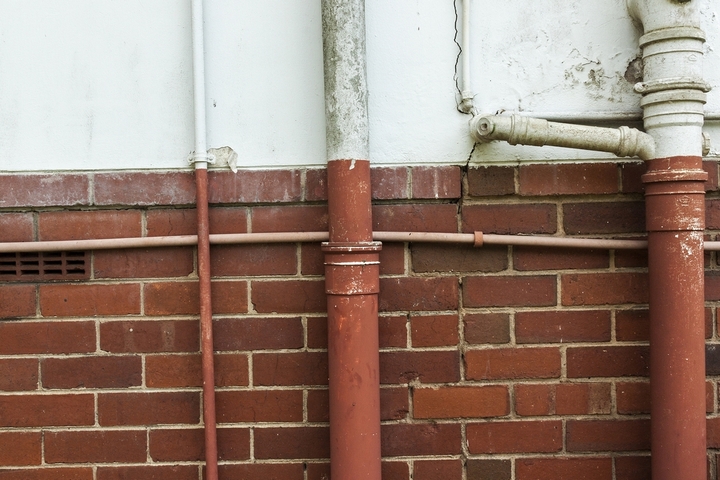Strong and consistent water pressure in a kitchen sink is necessary to clean dishes, tidy up after meals, and wash vegetables. Many homeowners underestimate the importance of water pressure as a feature in the kitchen.
You need strong water pressure in the kitchen. If you’re not getting it and don’t know why contacting a plumber is your only option. Fortunately, an experienced plumber can do a full analysis of your kitchen sink and plumbing situation, advise on the cause of water pressure problems, how to fix them, and provide a thorough understanding of what’s happening and how to avoid a similar situation in the future. When in doubt, rely on an expert plumber.
Unfortunately, low water pressure is an issue that many kitchens encounter and can be a real headache trying to work with. Don’t settle for that. Here is how to fix the water pressure in your kitchen sink:
Check the shut-off valve
 If there’s been recent work performed on your plumbing, the shut-off valve may not have been turned on again. Have a look at it. This valve, if partially closed, can cut down on water pressure in the kitchen sink.
If there’s been recent work performed on your plumbing, the shut-off valve may not have been turned on again. Have a look at it. This valve, if partially closed, can cut down on water pressure in the kitchen sink.
For specific fixtures, you will find the shut-off valve underneath the sink. If it’s in a closed position or isn’t all the way open, give it a turn. This might be the source of low water pressure in the kitchen.
Resolve an aerator clog
 A faucet aerator is a screen at the end of your faucet. An aerator can clog when debris and mineral scale in the water supply become trapped where the water passes through. As this slowly builds up, the water pressure is restricted.
A faucet aerator is a screen at the end of your faucet. An aerator can clog when debris and mineral scale in the water supply become trapped where the water passes through. As this slowly builds up, the water pressure is restricted.
To fix an aerator, remove it from its thread, check the pieces for deposits and debris, and clean all parts. They may need a soak in vinegar, which will help remove debris. They can then be rinsed, reassembled, and reattached.
Resolve an cartridge clog
 In some faucets, there is a cartridge, a plastic piece used to control water flow. Worn cartridges can cause issues, from a leaky kitchen faucet to difficulty regulating water flow. A cartridge can also clog. Kitchen faucet cartridge faucets are meant to be replaced eventually.
In some faucets, there is a cartridge, a plastic piece used to control water flow. Worn cartridges can cause issues, from a leaky kitchen faucet to difficulty regulating water flow. A cartridge can also clog. Kitchen faucet cartridge faucets are meant to be replaced eventually.
If you have this type of faucet, look into how well your cartridge performs. By replacing a worn cartridge, you will instantly notice a difference in water pressure.
Check the water heater
 You might see problems with your hot water but none with your cold. If that’s the case, look to your water heater for the answer. Though you can do some minor troubleshooting with a water heater, it’s best to leave that to a professional plumber. They have the right tools, know the hazards, and, even better, can fix any issue you may have. Water heater issues can impact your kitchen sink’s water pressure in certain instances.
You might see problems with your hot water but none with your cold. If that’s the case, look to your water heater for the answer. Though you can do some minor troubleshooting with a water heater, it’s best to leave that to a professional plumber. They have the right tools, know the hazards, and, even better, can fix any issue you may have. Water heater issues can impact your kitchen sink’s water pressure in certain instances.
Address leaky pipes
 Something else that can impact water pressure is the quality of the plumbing and if a leak has sprung. A pipe supplying water to your kitchen fixtures, when leaking, will likely produce less pressure.
Something else that can impact water pressure is the quality of the plumbing and if a leak has sprung. A pipe supplying water to your kitchen fixtures, when leaking, will likely produce less pressure.
Left unfixed, this issue can cause damage elsewhere in your plumbing. A plumber can diagnose and fix the issue. With the help of a professional, any leak inside the house can be located and analyzed and resolved.
Remove your low-flow faucet
 A low-flow faucet is designed to contain water flow and uses less water in your kitchen faucet. When water pressure is naturally lower than average, a low-flow faucet can produce less water than you need. A low-flow faucet is also not always ideal for a kitchen.
A low-flow faucet is designed to contain water flow and uses less water in your kitchen faucet. When water pressure is naturally lower than average, a low-flow faucet can produce less water than you need. A low-flow faucet is also not always ideal for a kitchen.
If you know you have a low-flow faucet, look at it first and verify it isn’t malfunctioning. If the faucet’s in good condition and still not producing the water pressure you want, replace it.
Low Water Pressure Elsewhere In The Home
 If you’re not exclusively having low water pressure issues in your kitchen sink, but it’s happened suddenly all over the home, it’s not an issue with your kitchen sink. It could be a plumbing issue inside the home, or it could be a broken water line. After a plumber has had a look, if it’s determined that there is an issue with the municipal water line feeding the house water, that’s something your municipality will have to deal with.
If you’re not exclusively having low water pressure issues in your kitchen sink, but it’s happened suddenly all over the home, it’s not an issue with your kitchen sink. It could be a plumbing issue inside the home, or it could be a broken water line. After a plumber has had a look, if it’s determined that there is an issue with the municipal water line feeding the house water, that’s something your municipality will have to deal with.
8. What To Know About Water Pressure In Older Homes
 In older homes where the plumbing is not updated, you may encounter old-style plumbing and corroded pipes. There is not much you can do about this situation other than redoing your plumbing, and a professional will be needed for that. Like water pipes can get clogged with scale, corrosion can also impact water pressure. Older, galvanized iron pipes can be a problem. To get a full scope of your options, have an assessment done by your plumber.
In older homes where the plumbing is not updated, you may encounter old-style plumbing and corroded pipes. There is not much you can do about this situation other than redoing your plumbing, and a professional will be needed for that. Like water pipes can get clogged with scale, corrosion can also impact water pressure. Older, galvanized iron pipes can be a problem. To get a full scope of your options, have an assessment done by your plumber.




